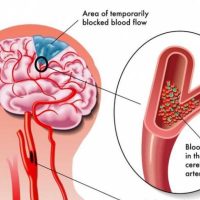Know more about FLU, COLD, and ALLERGY
The symptoms are similar, but one is more serious than the other, know which one. Know what to do from our symptom check list. What are the Differences?
Allergy
Symptoms usually strike quickly and can include runny nose, sneezing, wheezing, or watery and itchy eyes. You might experience itching in the ear, nose and throat. Nasal discharges are clear, thin and watery. Allergies occur during different seasons depending on what you are allergic to and can last weeks or months.
Talk to your doctor about tests to determine the cause of your allergies and the proper treatment. Once you know the specific “allergens” (generally harmless substances that cause an allergic reaction), avoidance is the best preventative.
Cold
You can usually feel cold symptoms developing over a few days. Symptoms might be the same as those for allergies, but without itching in the ear, nose and throat. You could have a sore throat, cough, or mild fever. Nasal discharges are thin and clear at the outset but change to thick, yellow or green. Colds generally occur during the fall and winter and should clear up in 7 to 10 days.
You can achieve temporary relief of symptoms with over-the-counter antihistamines and decongestants. If symptoms don’t clear up within 2 weeks, talk to your doctor. You can minimize the risk of catching a cold by washing your hands after contact with cold sufferers and any objects they may have touched. Try to avoid cold sufferers sneezing or coughing in your direction and don’t touch your nose or eyes with your fingers.
Flu
The onset of flu can be sudden and symptoms often include exhaustion, headache and severe aches and pains. Occasionally a stuffy nose, sneezing and sore throat are added to the mixture of symptoms. A cough is common and can become severe. High temperatures (> 38°C) can last 3 – 4 days while a general weakness or fatigue can continue for 2 – 3 weeks.
See your doctor for antiviral medications to relieve flu symptoms. To help prevent the flu, talk to your doctor about vaccination with annual flu shots.
Which one do you have?
Here’s a checklist of symptoms that will help you determine if you have the flu, common cold, allergy or something else:
Sniffling
If you are sniffling — but not achy, not feverish — it’s probably allergies.
Sniffling, achy, tired, fever? You have a common cold or the flu. You are contagious in those first days. Consider to stay home, take rest and have sick leave from your work. You’re not going to get much done at work anyway. Also, you will recover quicker from the common cold or flu if you get enough rest.
Chills, Sweats
If your clothes are getting drenched, you’re likely to have a fever. (A warm forehead is a very low-grade fever or nothing at all.) When you have a fever, stay home. It’s likely the flu or the common cold. Drink fluids. Have enough rest. If it doesn’t get better in a few days with fever medicine, see a doctor. And an extra consideration is your travel history, think about malaria and dengue fever, if you’ve been traveling in malaria or dengue epidemic areas.
If you have a fever plus white patches on your tonsils (say “ah”), it may be strep throat. It’s highly contagious. You may need antibiotics. See a doctor!
Coughing
If it’s a tickle in the throat or it feels like postnasal drip, the cough is probably from allergies or common cold. Unless you’ve got other common cold symptoms, such as aches or fever, you should be fit to continue your daily activities.
If the cough feels deep, makes you short of breath, and brings up green mucus, it’s likely more than the common cold — perhaps bronchitis or pneumonia, see a doctor!
Earache
If your ear really hurts, if you can’t hear well, you may have an ear infection. That’s not contagious. Congestion from a common cold can also leave your ear in pain. You need to see a doctor to see which it is. You may need an antibiotic. Ear infections usually don’t go away on their own.
Red eyes
If your eyes are bright red, if there’s creamy white stuff in the corners, if your eyelashes are getting matted, you could have conjunctivitis, which can be highly contagious. See a doctor.
Sinus Pain
Pain around the eyes, top of the forehead, the cheekbones, even the top of your teeth are signs of a sinus infection, but it could be a common cold. It’s best that you see a doctor, you might need an antibiotic.
Stomach Problems
Common cold or the flu are not usually associated with stomach problems. If you have some symptoms such as stomach cramping, diarrhea, nausea, vomiting, remember what you ate before. With food poisoning, vomiting and diarrhea usually occurs 6 to 12 hours after you’ve eat. If you’ve been traveling to Bali, you might have Bali Belly!
Headaches/Migraines
Though headaches can be caused by things like the common cold, if you can’t tolerate noise or light, you likely have a migraine. If you haven’t seen a doctor for your migraines, make an appointment. There’s no point in suffering. There are drugs you can take for migraines that start working within the hour and shorten the migraine’s duration.











